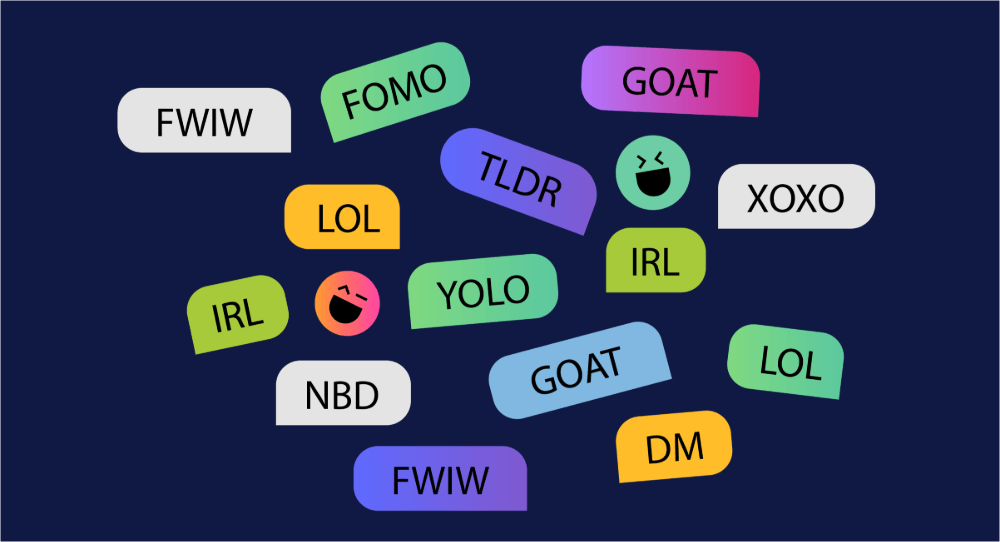📑Table of Contents:
- The Origins of Text Abbreviations
- Why Do People Use Abbreviations?
- Common Everyday Abbreviations
- Abbreviations for Professional Settings
- Social Media Abbreviations
- Gaming Abbreviations
- Abbreviations for Emotions and Reactions
- Abbreviations in Different Age Groups
- Benefits of Using Abbreviations
- Challenges of Abbreviations
- How to Use Abbreviations Wisely
- Final Thoughts

Texting has become one of the fastest ways to communicate in our daily lives. Whether through SMS, WhatsApp, Messenger, or social media apps, people are typing more messages than ever before. But with speed comes the need for efficiency. That’s where text abbreviations come in.
Abbreviations, acronyms, and shorthand have transformed the way we communicate digitally. Instead of writing long sentences, people now use short, catchy forms of words. A simple “LOL” replaces “I’m laughing so hard right now.” A quick “BRB” tells someone you’ll step away for a moment. These small changes save time, but they also reshape language itself.
This guide goes beyond just listing abbreviations. It explores their origins, categories, usage in different contexts, benefits, challenges, and tips for mastering them in 2025 and beyond.
The Origins of Text Abbreviations
Text abbreviations have been around much longer than modern smartphones. In the early 1990s, when SMS first appeared, phones only allowed 160 characters per message. Users had to get creative. Instead of wasting space, they shortened words. For example, “See you later” became “CUL8R.”
Over time, abbreviations spread beyond SMS. With the rise of instant messaging platforms like MSN Messenger, AIM, and later WhatsApp, people leaned on abbreviations to type faster. Social media also fueled the trend. Twitter, with its original 140-character limit, made short forms essential.
Today, abbreviations are not just shortcuts. They represent culture, identity, and even humor. Younger generations use them to connect, while businesses sometimes adapt them to engage audiences.
Why Do People Use Abbreviations?
People use abbreviations for several reasons:
- Save time: Shorter words mean faster typing.
- Express emotions quickly: Abbreviations like “LOL” or “SMH” carry strong emotional tones.
- Stay trendy: Many abbreviations are tied to internet culture and memes.
- Fit into small spaces: Character limits on platforms push users to condense text.
- Create community: Shared knowledge of abbreviations builds belonging among peers.
Abbreviations are not just about convenience. They also act as a cultural shorthand, signaling that you’re “in the know.”
Common Everyday Abbreviations
In casual texting, abbreviations dominate. Here are some you’ll likely encounter every day:
- LOL – Laugh Out Loud
- OMG – Oh My God
- BRB – Be Right Back
- TTYL – Talk To You Later
- IDC – I Don’t Care
- LMK – Let Me Know
- ILY – I Love You
- GN – Good Night
- SMH – Shaking My Head
These are the building blocks of digital communication. Most people learn them naturally through texting with friends.
Abbreviations for Professional Settings
While casual abbreviations dominate personal texting, professional environments also have their own set. Used carefully, these abbreviations can make workplace communication faster.
- ASAP – As Soon As Possible
- EOD – End Of Day
- ETA – Estimated Time of Arrival
- FYI – For Your Information
- OOO – Out Of Office
- TBA – To Be Announced
- TBD – To Be Decided
- RSVP – Please Respond
In business, these are often used in emails, project management tools, and Slack channels. However, it’s best to ensure your audience understands them to avoid confusion.
Social Media Abbreviations
Social media thrives on speed and creativity, so abbreviations often spread here before anywhere else. If you scroll through Twitter, TikTok, or Instagram, you’ll see these frequently:
- FOMO – Fear Of Missing Out
- ICYMI – In Case You Missed It
- YOLO – You Only Live Once
- TBT – Throwback Thursday
- OOTD – Outfit Of The Day
- DM – Direct Message
- NSFW – Not Safe For Work
- BFF – Best Friends Forever
These short forms are not just practical. They also play a role in trends, challenges, and memes. Knowing them helps you stay part of the online conversation.
Gaming Abbreviations
Gamers, who need to type quickly while playing, developed their own set of abbreviations. Many of these are now used outside gaming too:
- GG – Good Game
- AFK – Away From Keyboard
- OP – Overpowered
- HP – Health Points
- XP – Experience Points
- GLHF – Good Luck, Have Fun
- NPC – Non-Player Character
These abbreviations save time in high-speed environments and are now part of global gamer culture.
Abbreviations for Emotions and Reactions
One of the biggest roles abbreviations play is showing emotion. Since texting lacks body language and tone, abbreviations fill the gap:
- LOL – Laugh Out Loud
- ROFL – Rolling On The Floor Laughing
- LMAO – Laughing My A** Off
- IDK – I Don’t Know
- TBH – To Be Honest
- OMG – Oh My God
- ILYSM – I Love You So Much
These add emotional weight to plain text, making conversations livelier.
Abbreviations in Different Age Groups
Different generations use abbreviations differently:
- Gen Z tends to invent and adopt new slang quickly. They often use terms from TikTok trends, like “FR” (For Real).
- Millennials still use classics like LOL, OMG, and BRB.
- Older generations may prefer writing full words but are slowly adopting common ones like FYI or ASAP.
Understanding this helps you adjust your style when texting different age groups.
Benefits of Using Abbreviations
Abbreviations bring several advantages:
- Efficiency: You type faster and convey more in less space.
- Expressiveness: They add humor, sarcasm, or friendliness.
- Trendiness: They keep you in touch with digital culture.
- Community building: Shared use creates a sense of belonging.
For businesses, using popular abbreviations can also make brands feel more relatable to younger audiences.
Challenges of Abbreviations
Of course, abbreviations are not perfect. They come with challenges:
- Confusion: Not everyone knows what every abbreviation means.
- Overuse: Too many abbreviations can make text hard to read.
- Miscommunication: One abbreviation can mean different things in different contexts (for example, “AF” can mean “As F***” or “April Fools”).
- Professionalism: Using casual abbreviations in formal emails can hurt credibility.
Balancing clarity and brevity is key.
How to Use Abbreviations Wisely
If you want to master abbreviations, follow these tips:
- Know your audience: Use casual abbreviations with friends, professional ones at work.
- Keep balance: Mix full sentences with abbreviations so your message stays clear.
- Stay updated: New abbreviations appear constantly—stay in the loop.
- Avoid formal contexts: In resumes, cover letters, or academic papers, avoid abbreviations.
This ensures you benefit from abbreviations without creating misunderstandings.

Final Thoughts
Abbreviations have changed communication forever. From SMS character limits to TikTok trends, they shape the way we speak and write. They save time, bring humor, and connect people across cultures.
Yet, they also demand careful use. Too many can confuse. Too few can make you seem out of touch. The best approach is balance—use them to enhance your conversations, not replace them.
So next time you see “ICYMI” in a tweet or “BRB” in a chat, you’ll know the meaning and when to use it yourself. Text abbreviations are not just tools. They are part of modern culture and will continue to evolve with every new generation of digital communication.
